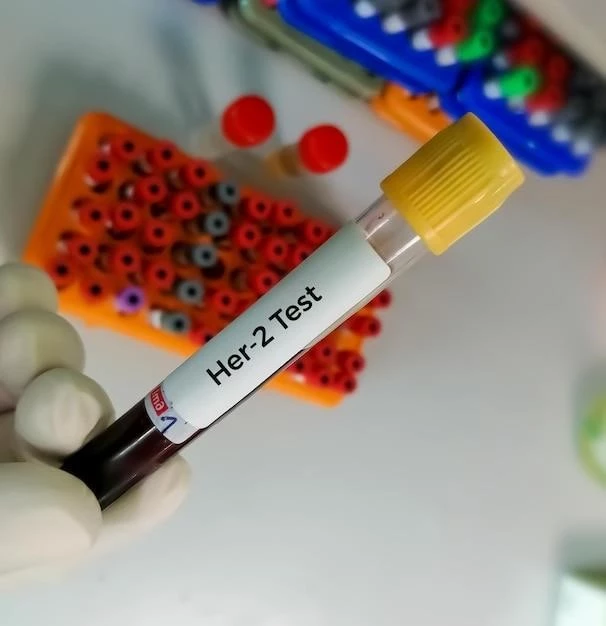Disease ‒ D-Glyceric acidemia
D-Glyceric acidemia is a rare inherited disorder characterized by a genetic mutation affecting metabolism. It results in a deficiency of the enzyme needed to process D-glyceric acid. This article will provide a comprehensive overview of the diagnosis, treatment, symptoms in infants and children, as well as complications associated with this condition.
Overview of D-Glyceric Acidemia
D-Glyceric acidemia is a rare genetic disorder caused by mutations in the D-glycerate dehydrogenase gene. This disorder interferes with the metabolism of D-glyceric acid, leading to an accumulation of this acid in the blood and urine. Infants and children with D-Glyceric acidemia may experience symptoms such as developmental delays, failure to thrive, and metabolic acidosis. Due to the rarity of this condition, early diagnosis is crucial for appropriate medical intervention. The treatment typically involves dietary adjustments and symptom management to prevent complications associated with D-Glyceric acidemia. Continuous monitoring and follow-up care are essential in managing this rare inherited disorder effectively.
Genetic Basis of D-Glyceric Acidemia
D-Glyceric acidemia is primarily caused by genetic mutations in the glycerate dehydrogenase gene (GLYCTK). These mutations lead to a deficiency in the enzyme responsible for metabolizing D-glyceric acid, resulting in its accumulation in the body. The inheritance pattern of D-Glyceric acidemia is autosomal recessive, meaning that both parents must carry a copy of the mutated gene for a child to inherit the disorder. Understanding the genetic basis of this condition is essential for accurate diagnosis and genetic counseling. Genetic testing can help identify the specific mutations involved, guiding treatment strategies and family planning decisions for individuals at risk of passing on the disorder.
Metabolism and Enzyme Deficiency

D-Glyceric acidemia is characterized by a deficiency in the enzyme D-glycerate dehydrogenase, which plays a crucial role in metabolizing D-glyceric acid in the body. When this enzyme is deficient, the normal metabolic process is disrupted, leading to the accumulation of D-glyceric acid in the blood and urine. This disruption in metabolism can result in metabolic acidemia and other biochemical imbalances. Understanding the intricate metabolic pathways and the enzyme deficiency associated with D-Glyceric acidemia is key to developing targeted treatment approaches that aim to restore metabolic balance and alleviate symptoms in affected individuals.
Diagnosis of D-Glyceric Acidemia
Diagnosing D-Glyceric acidemia involves a combination of clinical evaluation, biochemical testing, and genetic analysis. Initial diagnostic steps may include blood and urine tests to detect elevated levels of D-glyceric acid. Genetic testing is essential for confirming the presence of mutations in the glycerate dehydrogenase gene (GLYCTK). Additionally, imaging studies such as magnetic resonance imaging (MRI) can help assess potential brain abnormalities associated with the condition. Early diagnosis is crucial to implement appropriate medical interventions and prevent complications. Collaborating with a team of healthcare professionals experienced in rare genetic disorders is essential for an accurate and timely diagnosis of D-Glyceric acidemia.
Symptoms in Infants and Children
Infants and children affected by D-Glyceric acidemia may present with a range of symptoms related to metabolic dysfunction. These can include failure to thrive, developmental delays, seizures, muscle weakness, vomiting, and metabolic acidosis. Additionally, individuals with D-Glyceric acidemia may experience neurological symptoms such as intellectual disability, hypotonia, and abnormal movements. The severity and onset of symptoms can vary, making early recognition essential for prompt intervention and management. Close monitoring of developmental milestones and regular medical evaluations are crucial for identifying and addressing symptoms in infants and children with D-Glyceric acidemia.
Rare Nature of D-Glyceric Acidemia
D-Glyceric acidemia is considered a rare inherited disorder, with only a small number of cases reported worldwide. The rarity of this condition poses challenges in terms of diagnosis, treatment, and access to specialized care. Due to its infrequent occurrence, healthcare professionals may have limited familiarity with the disorder, leading to potential delays in diagnosis and management. The limited prevalence of D-Glyceric acidemia underscores the importance of raising awareness among healthcare providers and promoting research efforts to deepen our understanding of this rare genetic disorder. Collaborative efforts between healthcare professionals, researchers, and patient advocacy groups are vital in advancing care and support for individuals living with D-Glyceric acidemia.
Treatment Options for D-Glyceric Acidemia
The treatment approach for D-Glyceric acidemia typically focuses on managing symptoms and preventing complications associated with metabolic imbalances. Dietary interventions may involve restricting certain amino acids or proteins that could worsen metabolic acidosis. Additionally, supplementation with specific nutrients or cofactors may be recommended to support metabolic pathways affected by the enzyme deficiency. Monitoring the acid-base balance and metabolic status through regular blood tests is crucial for adjusting treatment protocols as needed. Collaborating with a multidisciplinary healthcare team, including metabolic specialists and nutritionists, can help tailor individualized treatment plans to optimize the care and well-being of individuals with D-Glyceric acidemia.
Complications Associated with D-Glyceric Acidemia
Individuals with D-Glyceric acidemia may be at risk of experiencing various complications related to metabolic disturbances and enzyme deficiency. Complications can include metabolic acidosis, which can lead to electrolyte imbalances and disrupt vital physiological functions. Additionally, untreated or poorly managed D-Glyceric acidemia can result in developmental delays, intellectual disability, and neurological issues. Severe cases may manifest as seizures, muscle weakness, and life-threatening metabolic crises. Timely diagnosis and appropriate treatment are essential for minimizing the risk of complications and improving the long-term outcomes for individuals affected by D-Glyceric acidemia. Regular medical monitoring and proactive management are crucial in mitigating potential complications associated with this rare inherited disorder.
Importance of Early Intervention and Follow-up Care
Early intervention plays a critical role in the management of D-Glyceric acidemia to prevent complications and optimize outcomes. Timely diagnosis through newborn screening or vigilant monitoring of symptoms in infants and children enables healthcare providers to implement appropriate treatment strategies promptly. Follow-up care is essential for ongoing monitoring of metabolic parameters, growth and development, and the effectiveness of treatment interventions. Regular follow-up visits with metabolic specialists, genetic counselors, and other healthcare professionals are vital in adapting treatment plans based on individual needs and ensuring comprehensive care for individuals with D-Glyceric acidemia. By prioritizing early intervention and diligent follow-up care, healthcare teams can enhance the quality of life and prognosis for individuals affected by this rare inherited disorder.
